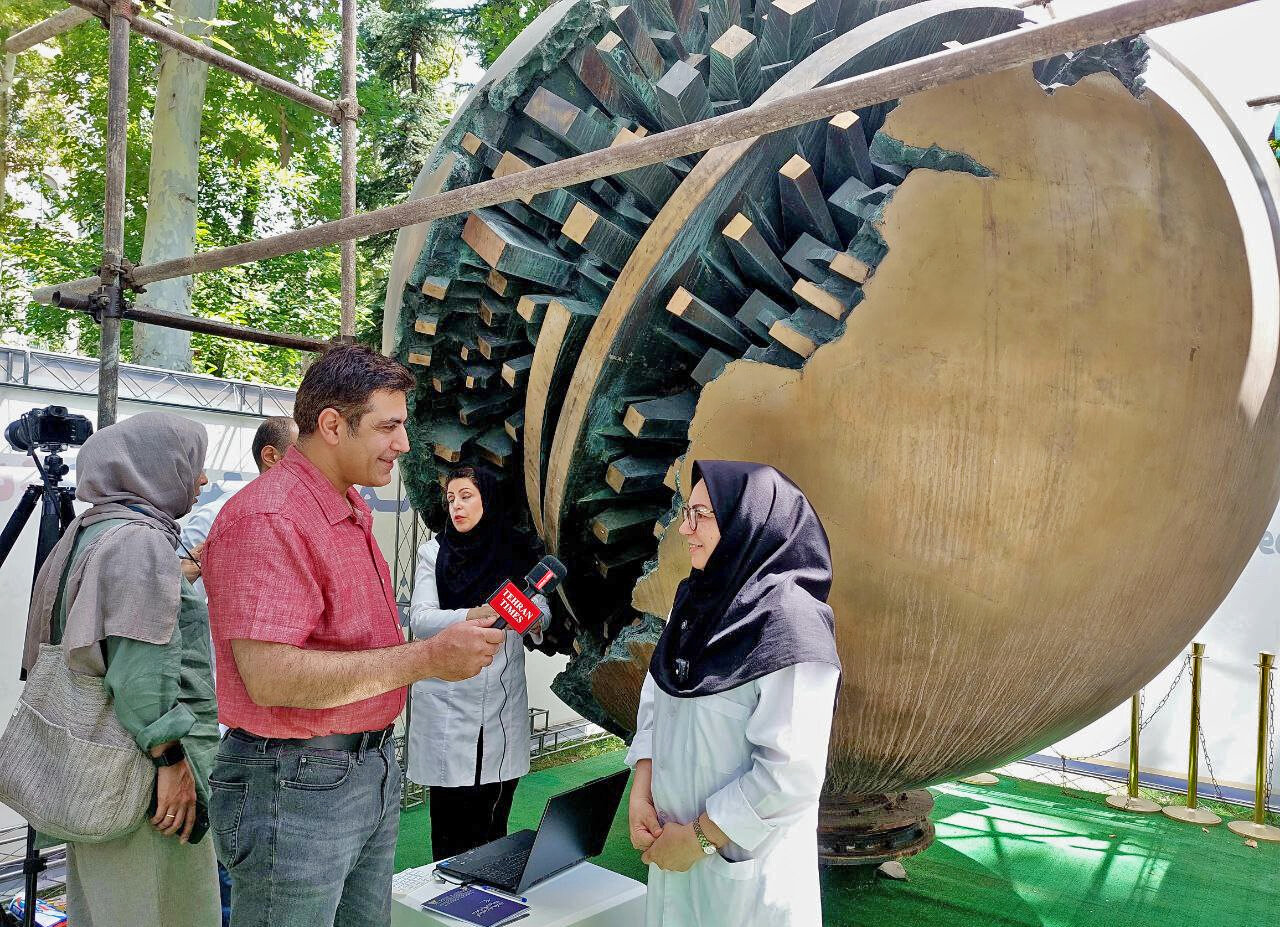Restoration of Arnaldo Pomodoro’s 3-ton bronze sphere underway in Tehran

TEHRAN - Conservation work has begun on a 3,000-kilogram bronze sculpture by the late Italian artist Arnaldo Pomodoro at a museum in northern Tehran.
The restoration project, launched two weeks ago, is taking place at the Time Museum in Tehran’s Zaferaniyeh district. The sculpture, known as Sfera di Pomodoro, had previously been installed in Tehran’s Eram Park since 1978 and had sustained various forms of environmental and surface damage, according to Iranian heritage experts.
Manijeh Hadian-Dehkordi, a conservation scientist and faculty member at the Research Institute of Cultural Heritage and Tourism, told the Tehran Times that the restoration is expected to take approximately 14 weeks. “The sculpture had been exposed to years of environmental degradation, including air pollution and unprofessional cleaning efforts,” she said.
Visitors to the Time Museum will be able to observe the restoration process, which is being conducted in a transparent, on-site conservation workshop.
Hadian-Dehkordi said the bronze sphere, constructed from a copper alloy, is one of three Pomodoro works in Iran. The largest of the three is at the Time Museum. The two other versions include a piece at the Tehran Museum of Contemporary Art and a miniature, 30-centimeter model housed at Niavaran Palace complex. A Pomodoro column sculpture is also located at Niavaran.
The sphere, created in 1974 and transferred to Iran in 1978, is part of a limited number of large-scale Sphere within Sphere works by Pomodoro, which are also on display at locations such as the United Nations Headquarters in New York, UNESCO’s Paris headquarters, and St. Peter’s Square in Vatican City.
According to Hadian-Dehkordi, current conservation efforts include damage documentation, photogrammetry, and microstructural analysis. “We’ve used thousands of images and 3D modeling to assess the extent of damage,” she said.
Shiba Khadir, a metal conservation specialist involved in the project, said a detailed microscopic analysis is being carried out to identify corrosion patterns, micro-cracks, and surface degradation. “The most serious issues are discoloration and superficial pollution, some of which resulted from previous cleaning attempts,” Khadir said.
The conservation process will include surface cleaning, stabilization using special resins, and long-term preservation measures. “For contemporary art like this, surface appearance matters. The Pomodoro Foundation has requested that the sculpture be returned to its original polished and reflective condition,” Hadian-Dehkordi said.
Khadir noted that materials for the restoration are being sourced based on recommendations from the Pomodoro Foundation. “We are evaluating whether we can procure suitable materials locally or must rely on standard chemical treatments commonly used in international conservation projects,” she said.
Mechanical techniques will be minimized to avoid surface abrasion, she added. “We are testing several cleaning agents previously used on similar artworks. If effective, we will proceed with them; otherwise, we may request specialized materials from the Pomodoro Foundation.”
Pomodoro, born in 1926, is widely known for his polished bronze sculptures that often feature structural ruptures, revealing complex interiors. His Sphere within Sphere works symbolize the contrast between external perfection and internal complexity.
AM
